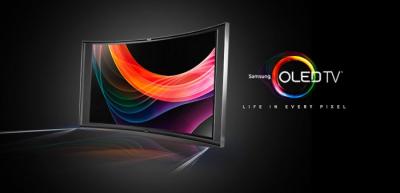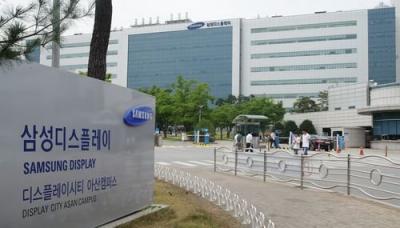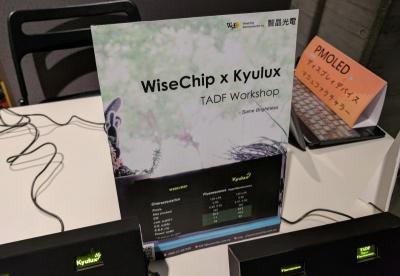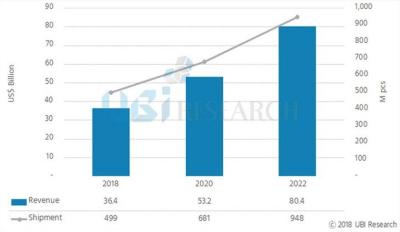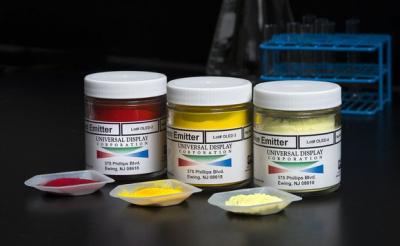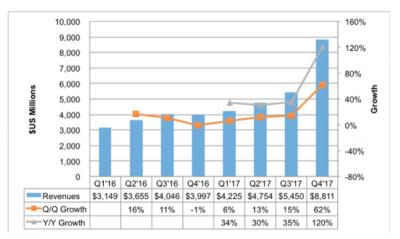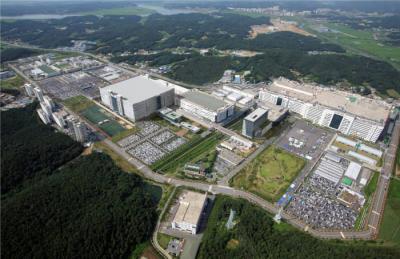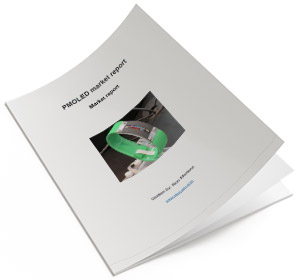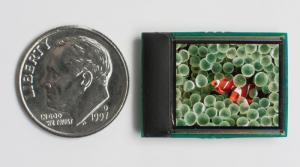DSCC: the OLED material market will reach $2.56 billion in 2022
Display Supply Chain Consultants (DSCC) says that OLED material revenues grew 43% to reach $869 million in 2017. DSCC expects the OLED material market to grow at a 24% CAGR until 2022, when the market will reach $2.56 billion.
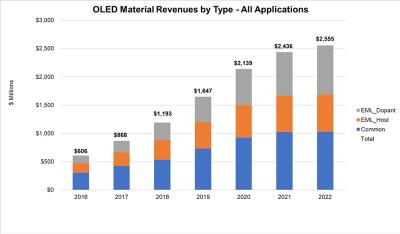
The small/medium display market accounts to about 59% of the total OLED material market, and this will continue until 2022. For the TV market, DSCC expects ink-jet printing to enable producers to make lower the material costs of OLED TV production, and OLED TV materials will grow at a rate of 23%, from $344 in 2017 to $963 million in 2022.


